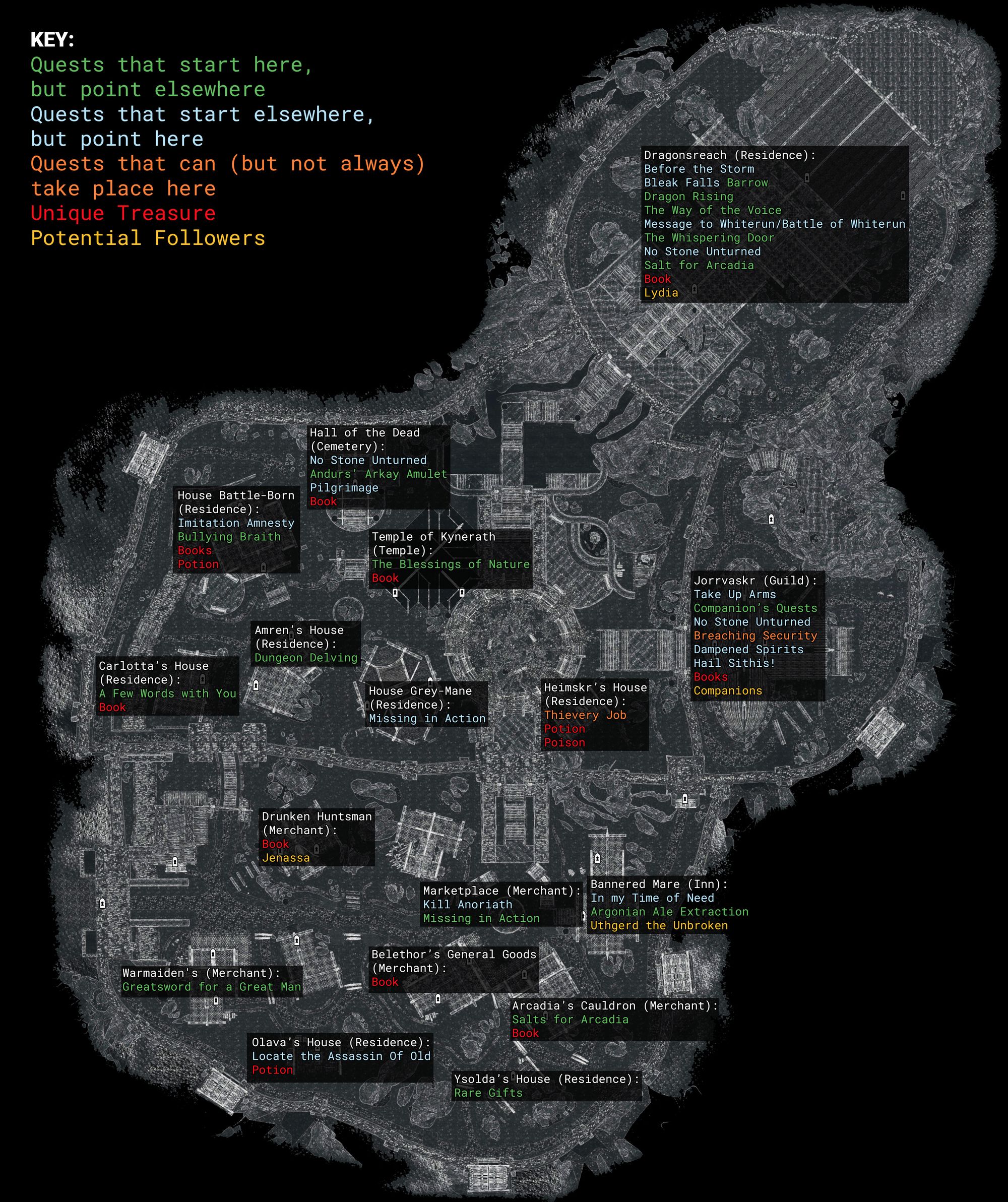LESSONS LEARNED: SKYRIM CITY DESIGN
If you want to encourage exploration in your game, you must reward exploration.

The Elder Scrolls V: Skyrim is a game that has proven itself a landmark title over and over again. There have been 6 different releases across virtually every platform and it has sold over 30 million copies. I can say personally that Skyrim has had a big influence on my expectations in regards to fantasy RPGs and the fantasy genre as a whole, and I bet a lot of you would say the same. Because of this; I have been analyzing the design choices Bethesda made and how they can be applicable to DnD. This article is going to examine aspects of Skyrim's city design and how they could be used to enrich cities in a sandbox DnD campaign.
The image above is a map of the city of Whiterun. I've added an overlay which shows the spread of quests, unique treasure, and potential followers that can be found in the different buildings throughout the city. There's a total of 21 buildings located in Whiterun and 16 of them feature at least one of these additional elements. Why is this significant?
A major element of sandbox style RPGs is exploration. Whether it's a video game or a TTRPG, we as players want to feel like we can explore the world freely and that our exploration will lead to interesting discoveries. If you want to encourage exploration in your game, you must reward exploration. Skyrim does a fantastic job with this, and you can see it clearly in Whiterun. Many unique quests are started by exploring the different houses and locations found scattered throughout the city. Some merchants have special skill books that can be spotted and utilized by an observant player. There are NPCs that can be interacted with and convinced to join you on your adventures. These components aren't found in only two or three different locations, but 16. Because of this, the various residences and merchants feel dynamic and worth taking the time to investigate.
In order to breathe more life into your sandbox DnD campaigns; try dispersing encounters, quests, and interesting NPCs throughout your locations. Instead of having all of your quests found on a single quest board or within the rumors of the most popular tavern, pass them out to your less developed NPCs. Place secrets within your shops and other mundane buildings. This may seem like a lot of additional work, but it doesn't have to be. If you are running a sandbox campaign then you should have a plethora of plot hooks ready to introduce. Within your cities there will be commonplace shops and other standard buildings that otherwise serve no purpose. Experiment bringing these places into the fold and watch your city come to life. Once your players begin to experience exciting moments off the beaten path, they will spend more time exploring your rich and engaging world.
